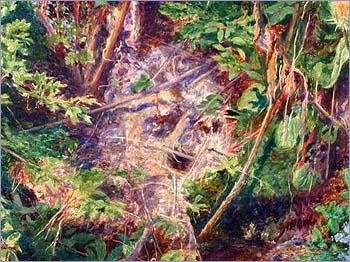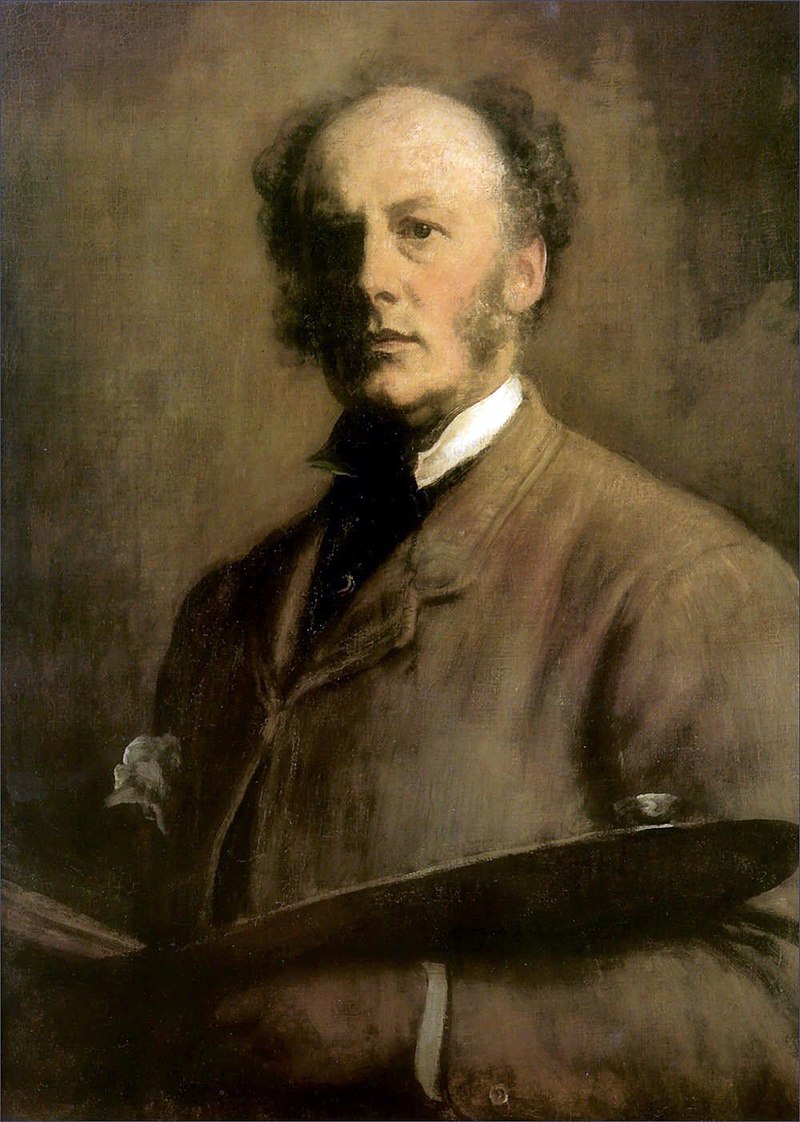Symbolic pics sharing thread (allseeingeye...)
- Thread starter poupoune
- Start date
HIVITES REFER TO THIS PICTURE A LOT
Ophelia is a painting by British artist Sir John Everett Millais, completed in 1851 and 1852 and in the collection of Tate Britain in London. It depicts Ophelia, a character from William Shakespeare's play Hamlet, singing before she drowns in a river in Denmark.
The work encountered a mixed response when first exhibited at the Royal Academy, but has since come to be admired as one of the most important works of the mid-nineteenth century for its beauty, its accurate depiction of a natural landscape, and its influence on artists from John William Waterhouse and Salvador Dalí to Peter Blake, Ed Ruscha and Friedrich Heyser.

She lays in rutualistic cross pose. Ophelia's pose—her open arms and upwards gaze—also resembles traditional portrayals of saints or martyrs, but has also been interpreted as erotic.
Researchers are sure theat in right angle we can see a scull



Sir John Everett Millais, 1st Baronet, PRA (UK: /ˈmɪleɪ/ MIL-ay, US: /mɪˈleɪ/ mil-AY;[1][2] 8 June 1829 – 13 August 1896) was an English painter and illustrator who was one of the founders of the Pre-Raphaelite Brotherhood.[3] He was a child prodigy who, aged eleven, became the youngest student to enter the Royal Academy Schools. The Pre-Raphaelite Brotherhood was founded at his family home in London, at 83 Gower Street (now number 7).
Cherry Ripe (1879), Private Collection. PINK + BALCK+WHITE. Cherry is Pizzagate code.

Autumn Leaves (1856) is a painting by John Everett Millais exhibited at the Royal Academy in 1856. It was described by the critic John Ruskin as "the first instance of a perfectly painted twilight."[1] Millais's wife Effie wrote that he had intended to create a picture that was "full of beauty and without a subject".

The picture depicts four girls in the twilight collecting and raking together fallen leaves in a garden, a location now occupied by Rodney Gardens in Perth, Scotland. They are making a bonfire, but the fire itself is invisible, only smoke emerging from between the leaves. The two girls on the left, modelled on Millais's sisters-in-law Alice and Sophie Gray,[3] are portrayed in middle-class clothing of the era; the two on the right are in rougher, working class clothing.
The painting has been seen as one of the earliest influences on the development of the aesthetic movement. [4]
A sculpture in Rodney Gardens, known as "Millais Viewpoint", recreates the view through two lower corners of a picture frame, made of stone.[5]
Red scarf -- RED = BLOOD. She holds and apple -- reference to Eve. Blakc and white clothing. Leaves reference to child sacrifice -- leas is a small part of a tree.
The apple held by the youngest girl at the right may allude to the loss of childhood innocence implied by reference to original sin and the expulsion from the Garden of Eden.[8]
After a positive review from F.G. Stephens, Millais wrote to him that he had "intended the picture to awaken by its solemnity the deepest religious reflection. I chose the subject of burning leaves as most calculated to produce this feeling."[9]
Ophelia is a painting by British artist Sir John Everett Millais, completed in 1851 and 1852 and in the collection of Tate Britain in London. It depicts Ophelia, a character from William Shakespeare's play Hamlet, singing before she drowns in a river in Denmark.
The work encountered a mixed response when first exhibited at the Royal Academy, but has since come to be admired as one of the most important works of the mid-nineteenth century for its beauty, its accurate depiction of a natural landscape, and its influence on artists from John William Waterhouse and Salvador Dalí to Peter Blake, Ed Ruscha and Friedrich Heyser.

She lays in rutualistic cross pose. Ophelia's pose—her open arms and upwards gaze—also resembles traditional portrayals of saints or martyrs, but has also been interpreted as erotic.
Researchers are sure theat in right angle we can see a scull


Sir John Everett Millais, 1st Baronet, PRA (UK: /ˈmɪleɪ/ MIL-ay, US: /mɪˈleɪ/ mil-AY;[1][2] 8 June 1829 – 13 August 1896) was an English painter and illustrator who was one of the founders of the Pre-Raphaelite Brotherhood.[3] He was a child prodigy who, aged eleven, became the youngest student to enter the Royal Academy Schools. The Pre-Raphaelite Brotherhood was founded at his family home in London, at 83 Gower Street (now number 7).
Cherry Ripe (1879), Private Collection. PINK + BALCK+WHITE. Cherry is Pizzagate code.

Autumn Leaves (1856) is a painting by John Everett Millais exhibited at the Royal Academy in 1856. It was described by the critic John Ruskin as "the first instance of a perfectly painted twilight."[1] Millais's wife Effie wrote that he had intended to create a picture that was "full of beauty and without a subject".

The picture depicts four girls in the twilight collecting and raking together fallen leaves in a garden, a location now occupied by Rodney Gardens in Perth, Scotland. They are making a bonfire, but the fire itself is invisible, only smoke emerging from between the leaves. The two girls on the left, modelled on Millais's sisters-in-law Alice and Sophie Gray,[3] are portrayed in middle-class clothing of the era; the two on the right are in rougher, working class clothing.
The painting has been seen as one of the earliest influences on the development of the aesthetic movement. [4]
A sculpture in Rodney Gardens, known as "Millais Viewpoint", recreates the view through two lower corners of a picture frame, made of stone.[5]
Red scarf -- RED = BLOOD. She holds and apple -- reference to Eve. Blakc and white clothing. Leaves reference to child sacrifice -- leas is a small part of a tree.
The apple held by the youngest girl at the right may allude to the loss of childhood innocence implied by reference to original sin and the expulsion from the Garden of Eden.[8]
After a positive review from F.G. Stephens, Millais wrote to him that he had "intended the picture to awaken by its solemnity the deepest religious reflection. I chose the subject of burning leaves as most calculated to produce this feeling."[9]
What a weird couple they wereSince VG's latest MK Ultra Handler article, I need to post this again in regards to russel "gatekeeper" brand and katey perry
View attachment 82230
Yiannis Ntoes
Established
- Joined
- Apr 21, 2020
- Messages
- 153
Yiannis Ntoes
Established
- Joined
- Apr 21, 2020
- Messages
- 153
That's creepy
yashashree
Established
- Joined
- Nov 4, 2020
- Messages
- 182

The Winston Duke Era Begins Now
A handful of scenes in 2018's 'Black Panther' made him an overnight celebrity. As he returns with a bigger role in 'Wakanda Forever,' the soulful and cerebral star is preparing for a new level of fame, mourning the loss of his closest confidante—his mother, Mama Coco—and searching for a deeper...
“A lot of painful events ensued, including seeing her body that morning, getting there while she was still warm in the ICU, and hugging and kissing her body until it got cold in our arms,” he tells me less than three weeks later.







https://www.instagram.com/reel/Ck83h3KgTXf/?utm_source=ig_web_copy_link

Esquire sur Instagram: "The @winstoncduke era begins now. Head to the link in @esquire’s bio to read the cover story featuring the @blackpanther star now. Executive Video Producer: @dorennanew DP: @ely_celestina"
106K likes, 1,439 comments - esquire le November 14, 2022: "The @winstoncduke era begins now. Head to the link in @esquire’s bio to read the cover story featuring the @blackpanther star now. Executive Video Producer: @dorennanew DP: @ely_celestina".
 www.instagram.com
www.instagram.com
yashashree
Established
- Joined
- Nov 4, 2020
- Messages
- 182
yashashree
Established
- Joined
- Nov 4, 2020
- Messages
- 182
yashashree
Established
- Joined
- Nov 4, 2020
- Messages
- 182
yashashree
Established
- Joined
- Nov 4, 2020
- Messages
- 182
Is that true?
Even the kids..omg































































